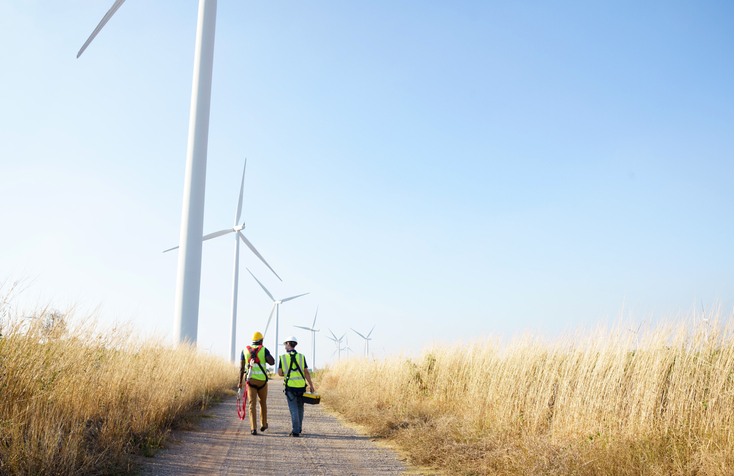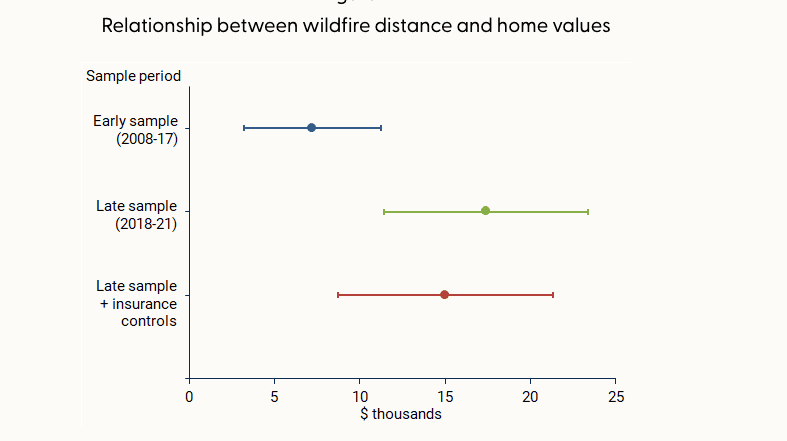Global Emissions From Electricity Set to Fall Even as Power Demand Climbs, IEA Predicts
Starting this year, record generation from renewables and nuclear will cover rising power demand from growth in emerging markets, AI and data centres, the agency says
By
GIULIA PETRONI
Mon, Jan 29, 2024 8:55am 2 min
2 min
Credit: wera Rodsawang/Getty Images
Global demand for electricity is set to grow at a faster rate over the next three years, but with record power generation from renewables and nuclear expected to cover the surge, emissions will likely go into structural decline, according to the International Energy Agency.
Electricity demand is on track to rise by an average of 3.4% a year through 2026, driven by robust growth in emerging economies, AI, cryptocurrencies and data centres, according to the Paris-based organization’s latest report. However, global carbon-dioxide emissions from power generation are expected to fall, as low-emission energy sources—wind, solar, hydro and nuclear, among others—are likely to account for almost half of the world’s electricity generation by 2026, up from just under 40% last year.
“It’s encouraging that the rapid growth of renewables and a steady expansion of nuclear power are together on course to match all the increase in global electricity demand over the next three years,” IEA’s executive director Fatih Birol said on Wednesday.
“This is largely thanks to the huge momentum behind renewables, with ever cheaper solar leading the way, and support from the important comeback of nuclear power, whose generation is set to reach a historic high by 2025.”
In 2023, global CO emissions from electricity generation increased by 1%, but the IEA predicts a fall of more than 2% this year and smaller decreases in the next two years. Generation from cleaner energy sources is expected to rise at twice the annual growth rate seen between 2018 and 2023, while coal-fired generation is forecast to fall by an average of 1.7% annually through 2026, the IEA said.
Rapid growth of renewables will be supported by nuclear power. According to the report, nuclear generation is set to rise by roughly 3% a year on average to the end of 2026, despite a number of countries phasing out nuclear power or closing plants early.
France and Japan will restart several plants while new reactors begin operating in Europe, China, India and Korea. Asia will likely remain the main driver of growth, reaching a 30% share of global nuclear generation in 2026, the IEA said.
For years, nuclear power has been at the centre of the clean-energy debate. Proponents including France argue that it is a reliable, low-carbon alternative to fossil fuels, while opponents such as Germany say costs and risks from reactor accidents and waste are too high.
At the United Nations’ COP28 climate summit last year, the U.S. and 21 other nations pledged to triple nuclear power capacity by the middle of the century.
Most of the increase in electricity demand forecast by the IEA is set to come from emerging markets. China is expected to be the largest contributor to growth—with consumption boosted by the production of solar PV modules, electric vehicles and the processing of raw materials—while India is forecast to grow the fastest among major economies.
Rapid expansion of artificial intelligence, data centres and cryptocurrencies will also be a driver of growth, according to the agency, which predicts their power demand could double to roughly the equivalent of electricity consumption in Japan.
Last year, electricity demand growth slowed to 2.2% from 2.4% in 2022, as advanced economies suffered the impact of high inflation and lower industrial output, the IEA said.
Demand in the U.S. decreased by 1.6% after rising 2.6% in 2022, mainly because milder weather reduced the use of heaters and coolers, but demand is expected to recover this year to 2026. European Union power demand declined for the second consecutive year in 2023—despite a fall in energy prices—and isn’t expected to return to high levels until 2026 at the earliest, the IEA said.






 Copyright 2020, Dow Jones & Company, Inc. All Rights Reserved Worldwide.
Copyright 2020, Dow Jones & Company, Inc. All Rights Reserved Worldwide. 









